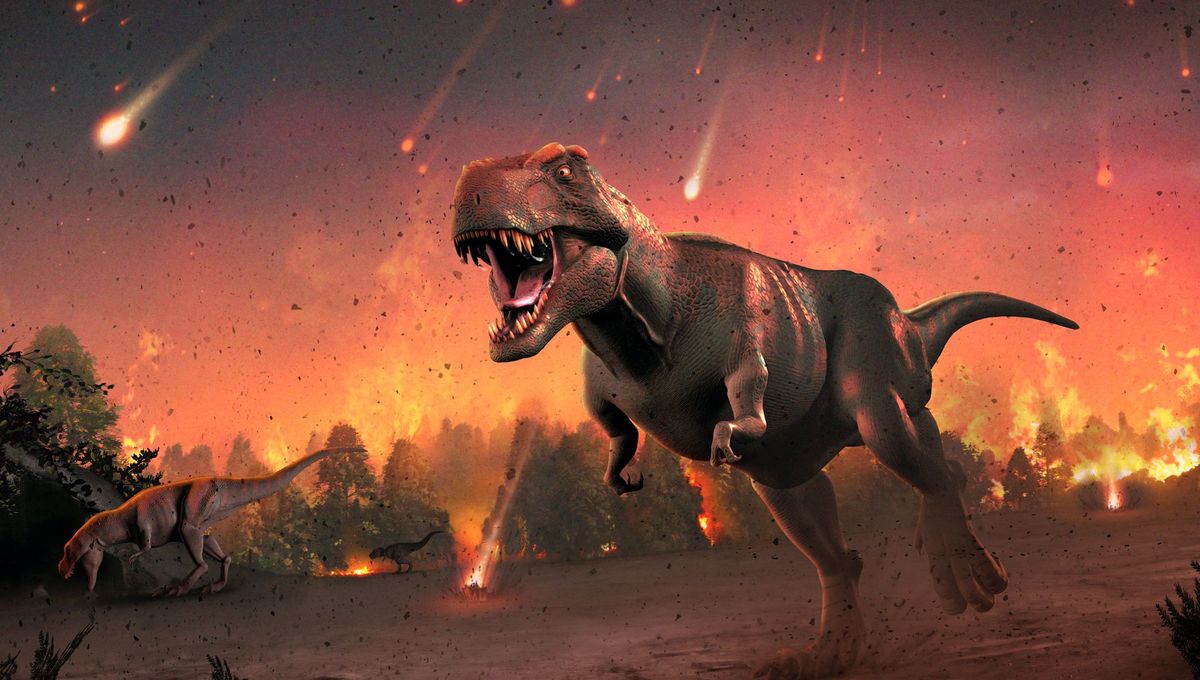
A giant asteroid is set to fly past the Earth the day after Christmas, according to NASA's Center for Near Earth Object Studies (CNEOS.)
Fortunately, there is no chance that the space rock—known as 310442 (2000 CH59)—will strike our planet. At its closest approach it will come within 4.5 million miles of our planet, or about 19 times the Earth-moon distance.
This close approach will take place on December 26 at 07:54 a.m. UTC, or 2:54 a.m. EST, CNEOS data shows .
Quite a lot has been going on:
NASA spacecraft stumbles upon trail of shooting stars | | heraldandnews.com

SAN FRANCISCO (WPB) — Once there was an asteroid that flew too close to the sun. It was small and dark and rocky, too fragile to withstand such scorching conditions. The asteroid cracked, releasing a burst of dust and debris. Though it continued traveling along its orbit, it dropped millions of fragments in its wake.
Humans named the asteroid Phaethon, for the child of the Greek sun god who couldn't handle his father's chariot and nearly destroyed the world. Each December, when our planet plunges through Phaethon's wake, we can see bits of the broken asteroid burn up in our atmosphere. Researchers call the light flashes the Geminid meteor shower. Children call them shooting stars.
NASA hopes OSIRIS-REx data will explain an asteroid's mini-eruptions | Engadget
NASA's OSIRIS-REx spacecraft made a startling discovery shortly after arriving at its target, a 1614-foot-wide rock called Bennu: the asteroid was ejecting particles from its surface. While that's common behavior on icy comets, it's much rarer on asteroids. The phenomenon has stumped scientists, but NASA has now offered a few explanations based on observations by OSIRIS-REx and hopes that a sample collected next year will offer a more definitive answer.
OSIRIS-REx has been surveying Bennu since it arrived on December 3rd, 2018 , with the aim of finding a boulder-free landing site. Based on observations so far, scientists have several theories about the eruptions. One is that small fragments of space rock called meteoroids are striking Bennu, dislodging particles.
Alumna Uses 3-D Printing to Help Guide Control 'Asteroid Jumping' Spacecraft |
Poking around under the hood is in Yomary Betancur Vesga’s comfort zone. As an Embry-Riddle Aeronautical University graduate student, she handled all of her own car maintenance herself — a budgetary necessity, she said. Now as a young engineer, newly hired by Collins Aerospace, she is applying her skills far beyond her home garage — namely, in designing a vehicle that can withstand the rigors of space exploration.
Working in the Advanced Dynamic and Control Lab at the John Mica Engineering and Aerospace Innovation Complex (“MicaPlex ”), in Embry-Riddle’s Research Park , she has been developing and implementing guidance, navigation and control systems for a six-degree-of-freedom spacecraft. The craft, complete with a camera and drill system, will have the ability to “jump” onto asteroids to collect samples.
This may worth something:
Before an asteroid wiped out dinosaurs, a huge volcano poisoned nearly everything on Earth

Just over 66 million years ago, Earth’s fate changed dramatically with the arrival of a massive asteroid that slammed into what is the present-day Yucatan Peninsula in Mexico. It was a devastating impact that ejected material into Earth’s atmosphere, shrouded much of the planet in darkness, and prompted the mass extinction of untold numbers of species.
Don't Miss : Amazon’s best-selling Wi-Fi range extender is still on sale for $15 and it has to be a mistake
Dinosaurs were being poisoned before epic asteroid strike: Study

Let's face it, dinosaurs enjoyed their rule of the roost on Earth for an epic length of time and were, as Jurassic Park's Dr. Ian Malcolm asserts so vehemently, selected for extinction by nature.
Wherever the debate on the exact cause of their eventual demise leads, it's often apparent to scientists that there were a number of contributing factors that played into their removal from our planet's ecosystem, most notably a ginormous asteroid 66 million years ago that left the Chicxulub Crater in Mexico's Yucatan Peninsula at the end of the Cretaceous Period.
Here are the places on asteroid Bennu where NASA might grab its sample – BGR

NASA’s OSIRIS-REx asteroid probe has been hanging around the space rock named Bennu for roughly a year now, and it’s observed some interesting things over the past 12 months. The primary goal of the mission is to retrieve a sample of asteroid material and then return to Earth where scientists can study it up close. Before that can happen, NASA has to decide where on Bennu it will direct the spacecraft to touch down.
Asteroid 323 Brucia became the first asteroid discovered using photography in 1891 |
323 Brucia was the first asteroid to be discovered by the use of astrophotography in 1891. 323 Brucia was discovered by Max Wolf, a pioneer in that method of finding astronomical objects. Max Wolf discovered over 200 asteroids and 323 Brucia was the first one. It was named in honour of Catherine Wolfe Bruce, a noted patroness of the science of astronomy. Catherine Wolfe Bruce had donated $10,000 for the construction of the telescope used by Wolf.


No comments:
Post a Comment